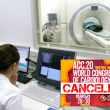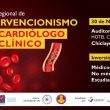Intravascular imaging with coronary optical coherence tomography (OCT) and magnetic resonance imaging allow for the identification of the cause of heart attack in 85% of women without coronary obstructions in angiography. Myocardial infarction with non-obstructive coronary arteries (MINOCA) affects women disproportionately and we have considered these events as “false positives” for far too long. The...
TCT 2020 | Prophylactic Angioplasty for Vulnerable Plaques
Patients with vulnerable plaque identified by means of intravascular ultrasound (IVUS) and near-infrared spectroscopy (NIRS) are at a significantly increased risk of adverse cardiovascular events. Revascularization of these vulnerable lesions could prevent clinical events. That is the theory behind prophylactic angioplasty, which still needs to be proven in clinical practice. The PROSPECT ABSORB study, nested...
The Most Read Scientific Articles of July in Interventional Cardiology
01- SOLACI PERIPHERAL | 2nd Clinical Case: Juxtarenal Abdominal Aortic Aneurysm SOLACI’s Department of Peripheral Endovascular Interventions brings a new challenging clinical case for the whole Latin American medical community so as to continue fostering and sharing scientific knowledge and experience among peers. Read more HERE 02- EuroPCR 2020 | A Trick to Find the Perfect...
Two-Stent Strategy is Safer in True Bifurcation Lesions
Courtesy of Dr. Carlos Fava. DES have improved PCI outcomes, but one of its biggest challenges continues to be bifurcations (especially when we have to use two stents, since it’s been associated to higher restenosis and stent thrombosis rates). Left main coronary artery true bifurcation lesions are the ones that generate the greatest challenge and...
Ideal Area for Unprotected Left Main PCI
Courtesy of Dr. Carlos Fava. Unprotected left main PCI (PCI-UPLMS) is an acceptable and comparable strategy vs CABG, although the use of IVUS is advisable, since it has shown better evolution and mortality. However, the adequate stent expansion remains unclear. Researchers carried out a sub-analyzis of the NOBLE trial. Of the total 603 patients receiving...
Quantitative Angiography that Estimates Shear Stress and Predicts Events
Shear stress has been incorporated to our jargon to identify this turbulent flow in certain places of the arterial tree (curves, bifurcations, etc.) that make these sectors more prone to plaque buildup. Seeing we often use the original term, no Spanish translation has been coined; we all refer to this phenomenon as shear stress and...
Subintimal Re-Entry in CTO Improves Outcomes
Courtesy of Dr. Carlos Fava. Chronic total occlusions (CTO) are still one of the greatest challenges in our field, thus forcing the development of different complex strategies to resolve them. Additionally, the use of imaging techniques during these procedures has improved long-term results. The CONSISTENT CTO (Conventional Antegrade Versus Sub-Intimal Synergy Stenting in Chronic Total Occlusions)...
Is the Use of iFR for the Deferral of Left Main Coronary Artery Lesions Safe?
Deferral of left main coronary artery lesions using instantaneous wave-free ratio (iFR) seems to be safe. At the least, patients with deferred lesions had similar long-term prognosis to that of patients who underwent revascularization based on that same indicator. Left main coronary artery lesions were universally excluded from studies including medical treatment among the therapeutic...
Virtual ACC 2020 | “Dangerous” Plaques by CT Effectively Predict Infarction
This post-hoc analysis of the SCOT-HEART shows low-attenuation plaque burden might successfully predict events. A greater number of low-attenuation plaques seems to be synonymous with greater risk which makes them better predictors than clinical scores, coronary calcification and stenosis degree. IVUS, CT and carotid ultrasound are the accepted tools to diagnose plaque burden and predict...
Regional Course of Interventionism for the Clinical Cardiologist | with SOLACI’s Support
On November 30, 2019, the “I Regional Course of Interventionism for the Clinical Cardiologist” will take place in Chiclayo, Peru. The event will be held in the Muchick Room at Costa del Sol Hotel, organized by the Peruvian Society of Hemodynamics and Endovascular Interventionism (SOPHIE) with the support of SOLACI. The activity will be oriented to...









